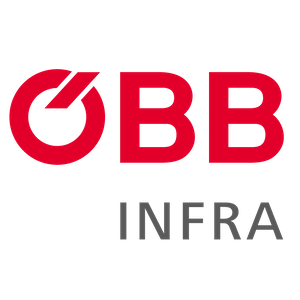
Sixth Edition of the Intelligent Maintenance Conference:
The Intelligent Maintenance Conference is an international event on new
diagnostic and intelligent monitoring methods for industrial systems!
Our objectives is to be a place to share fruitful discussions on predictive
maintenance between experts from the industry and the academic world.
Renowned speakers from varied backgrounds, including railway, automotive and
aerospace industry, academics, and others will be present.
It is with great excitement that the conference will come back to a 2-days
onsite event.
This year, the IMC conference will take place on the 06 and 07th of
September
2022 at EPFL Lausanne instead of ETH Zürich.
It will be organized by the same team as the previous years but named
differently as the newly founded Intelligent Maintenance and Operations
Systems
lab (formerly IMS chair) which is part of the School of Architecture, Civil
and
Environmental Engineering of EPFL Lausanne.
We aim to stay in the same spirit as in the previous years when the
attendence
was high and the interest of the community in such events was confirmed.
The program will be updated as speakers confirm their participation.
We look forward to seeing you next september at the conference!
Program Schedule
To access detailed information, please click on Abstract
-
8:30 AM - 9:00 AM
Registration with coffee
-
9:00 AM - 9:15 AM
Welcome
By Prof. Olga Fink, EPFL -
9:15 AM - 9:35 AM

Autonomous Robots for Industrial Inspection
By Dr. Harmish Khambhaita, ANYboticsCollecting timely and accurate data is a prerequisite for effective condition monitoring. Versatile, mobile, and intelligent robots provide industrial operators a fast and scalable solution for data collection while liberating human workers from repetitive and potentially dangerous tasks. ANYbotics provides the entire toolchain to automate repetitive data collection at an unprecedented quality and quantity allowing plant operators to gain insights and take actions. In this talk, we will show how intelligent inspection robots are automating data collection tasks in complex industrial facilities without the need for adaptations to the environment. -
9:35 AM - 9:55 AM
Autonomy and Me: Creating a Cyber Physical System to allow for scalable Multi-Robot Fleets
By Sam Harper, University of GlasgowThe transition of disruptive technologies into society and industry has always required trust and acceptance from end users. Unlike prior industrial revolutions, autonomous systems are associated with the displacement of people, creating unease in how to prepare individuals, communities, industry and government. The complex interaction of human-machine systems today also mean digitalization is inevitable if we are to connect business, people, place, and technology. As levels of automation increase, so do legal issues with accountability and ethics. How then can we develop autonomous systems that gain trust from users? And how can such systems adapt and provide insights to better develop symbiotic autonomy that can be entrusted with decision making? In the context of our research, we focus on the Offshore Renewable Energy (ORE) market, which represents an early adopter for the aforementioned technologies. Barriers to residential Beyond Visual Line of Sight (BVLOS) autonomy as a service, include operational challenges in run-time safety compliance, reliability and resilience, due to the complexities of dealing with risks in dynamic environments. We present how autonomous systems are enablers to unlocking human potential, supporting the creation of a sustainable and prosperous future. We implement a Symbiotic System Of Systems Approach (SSOSA) to provide a cyber physical orchestration of enabling technologies. Implementing a SSOSA, addresses the aforementioned challenges during autonomous missions. This provides a means to synchronize distributed digital models of the robot, IoT sensors, environment and infrastructure. Bidirectional communications throughout the system allow the remote human operator to have improved visibility of the mission. This creates robotic assistants where high value jobs within symbiotic partnerships deliver mutually optimized benefits. The results of our autonomous mission evaluation within an ORE sector analogue evaluate both sudden and gradual faults, as well as unknown events, that may jeopardize the mission. Using distributed and coordinated decision making, the SSOSA enhances the analysis of the mission status, which includes diagnostics of critical sub-systems within the resident robot. This evaluation demonstrates that the SSOSA provides enhanced run-time operational resilience and safety compliance to BVLOS autonomous missions. The SSOSA has the potential to be a highly transferable methodology to other mission scenarios and technologies, providing a pathway to implementing scalable autonomy as a service. -
10:15 AM - 10:45 AM
Session Q&A and Discussion
Dr. Harmish Khambhaita, Sam Harper, Prof. Dr. Davide Scaramuzza
Session Chair: Olga Fink -
10:45 AM - 11:15 AM
Coffee Break
-
11:15 AM - 11:35 AM

Grid 4.0 – Digital Solutions for Axpo’s Grid Business
By Johannes Manser, Axpo Grid AGIn order to improve the efficiency of the grid business, in 2018 we initiated a digitalization and innovation program called Grid 4.0. Since then, different projects have been started and partly realised to improve and further develop business processes. The talk will give insights into some of these projects like automated drone image recognition, transformer condition monitoring or a voltage control forecast. -
11:35 AM - 11:55 PM

Program Digital Power Plant – an Initiative for digital solutions in the SBB Energy Value Chain
By Philipp Wenk, SBBBased on the digital trends and business drivers in the energy and mobility industry virtual management of decentralized assets, building information modelling and digital or data driven asset management is key for future business skills. The presentation will give a brief overview on exploration cases and insights for status and challenges of two concrete Initiatives in these action fields which SBB Energie tackles. One initiative is about managing a future battery swarm that will arise due to sustainability goals in the railway power network and the other is about a project that aims to reconstruct the railway power network within 5 minutes in case of partial or complete blackout scenarios. -
11:55 AM - 12:15 PM
Session Q&A and Discussion
Johannes Manser, Philipp Wenk
Session Chair: Kai Hencken -
12:15 PM - 1:30 PM
Lunch
-
1:30 PM - 1:50 PM

Fast Time Series Analytics for Fault Detection, Diagnostics, and Prognostics
By Dr. Daniel Nikovski, Mitsubishi Electric Research Labs (MERL)Prognostics and health management (PHM) of equipment often require processing of long and multidimensional times series of measurements, where computational complexity is of primary importance. A recent advance in this area is the use of the matrix profile of a time series, which is a companion time series that conveniently encodes many analytics useful for PHM, and can be computed efficiently using advanced algorithms and modern hardware for parallel computation. Several variants of the matrix profile and its use for different PHM tasks will be discussed, along with more advanced time series primitives, such as time series chains. -
1:50 PM - 2:10 PM

Unsupervised Test-Time Domain adaptation for Road Damage Detection applied to different Countries
By Ismail Nejjar, EPFLAutomatic road damage assessment is an essential aspect of ensuring the safety and efficiency of our road network. However, collecting the required data can be tedious, often requiring large-scale labeling of detailed crack location. Such project requires time, funding and expertise in order to acquire the equipment and begin the data collection. Some states, such as Japan have already developed models for automatic road monitoring. Different Countries may have different road markings, for example, requiring the use of domain adaptation techniques. We solve an interesting but challenging case of Unsupervised Domain Adaptation using only a trained model. Test-time domain adaptation is different from standard domain adaptation where we aim to adapt a source pre-trained model to a target domain without using any source data. Such configuration increase data privacy, and reduce drastically the amounts of data transfer since transferring a trained model is much efficient than huge dataset transfer. -
2:10 PM - 2:30 PM
Asset Integrity Inspection of Subsurface Defects and Foresight Sensing via Millimeter-wave Radar
By Daniel Mitchell, University of GlasgowCritical infrastructure is a dense network of systems that provide vital services such as energy, transport and water. Continuous cycles of monitoring and repair are vital to the economic development and functions of a community. In the offshore renewable energy sector for example, global growth in onshore and offshore wind energy has created a forecasted 11.5% compound annual growth rate increase in wind turbine blades throughout 2020-2025. This represents a significant challenge in inspection, maintenance and repair to ensure these critical infrastructures remain optimised throughout their lifecycle and in reaching these areas which represent safety challenges (at height, changing weather conditions and increased risk offshore). Cyber physical systems are being advanced to mitigate risks in asset integrity inspection. In the next 5-10 years, Engineers will have the ability to deploy a robot for inspection similar to the ease of utilising a tool from their toolbox. However, the current state of the art faces challenges in safety and resilience of robots working alongside humans. In addition, current asset integrity inspection methods of subsurface fault precursors are insufficient and do not allow for smart decisions to take place across the lifecycle of an asset. This presentation presents two key findings via a novel millimeter-wave radar sensor:
Asset Integrity Inspection - The analysis of complex multi-layer structures which include civil infrastructure, wind turbine blades and corrosion via a novel millimeter-wave radar sensor. Results have demonstrated the ability for the radar to detect surface and subsurface defects which are present within the aforementioned materials.
Foresight Sensing - The implementation of radar sensing onboard robotic platforms for human detection and through-wall detection to increase situational awareness. The results validate the use of the sensor to detect the difference between a person and infrastructure leading to increased situational awareness for navigation via foresight monitoring through walls. This research ensures that inspection engineers have tools available which can provide quantitative and qualitative results enabling more effective assessment of the subsurface integrity of a structure. The FMCW sensing modality provides early prognostics and remedial action to be taken, reducing the downtime of an asset and risk of failure. Foresight sensing enables for increases in safety compliant robotics alongside resilience in hazardous and dynamic environments. -
2:30 PM - 3:00 PM
Session Q&A and Discussion
Dr. Daniel Nikovski, Ismail Nejjar, Daniel Mitchell
Session Chair: Pierre Dersin -
3:00 PM - 3:30 PM
Coffee Break
-
3:30 PM - 3:50 PM

Towards Global Smart Maintenance for Thermal Spray Equipment
By Dr. Majid Nabavi, Oerlikon Surface solutionsThermal spraying is a complex surface treatment process consisting of many complicated thermofluidic, electromagnetics, and electrochemistry, and particle physics phenomena. Ensuring high quality of the coating as well as high availability of the machine are of highest importance. While mathematical and CFD models provide valuable insight about the individual modules of a thermal spray process, it is very difficult to gain overall insight of the whole process and dependencies between different inputs and outputs using mathematical and CFD analysis, due to very complex and interconnected nature of the thermal spray process. In this work, we are trying to perform analysis on the collected machine data to achieve the following goals: (1) Alert creation: Identify any abnormal pattern in any of machine signals and bring it to the attention of the expert; (2) Anomaly prediction: There are some anomalies in the system that are not detected by any sensor. If there is a way to detect them early enough, the coating quality and health of the overall system will improve; (3) Hardware life-time prediction: The quality of coating is directly related to the quality and state of the spare part. Informing the operator about the right time to exchange the spare part is important for stable coating quality. -
3:50 PM - 4:10 PM

Challenges of PHM applications in the context of pharmaceutical packaging machines
By Dr. Andreas Steuer, Uhlmann Pac-SystemeTypical data-driven methods for predictive maintenance focus on having a fleet of similar machines that have to be differentiated regarding operating conditions like speed or load. After observing a number of critical failures, often machine learning methods are used to predict such events from sensor readings. Within the field of packaging machines for sensitive products, in which the Uhlmann group is the global market leader, the additional challenge is to deal with a much larger variability that comes from the large range of products our customer require to package. Furthermore as the process involves recurrent motions with cycle times well below one second, the various sensor readings have to be observed in a high resolution. Finally, as our machines are deployed world-wide the environmental conditions like humidity differ significantly. In this talk, we introduce the various steps involved in the packaging process and what range of solutions Uhlmann is offering to the pharmaceutical industry. Then we shed some light on the subtle difficulties and peculiarities that come from the aforementioned points. Finally we present some results on what level of detail we can expect, which anomalies we already observed in data and how we tend to cope with the challenges mentioned. We conclude the talk with our vision that we do not think of machines, sustainability and AI as separate products but how we will achieve sustainable packaging solutions with the help of machine learning. -
4:10 PM - 4:30 PM
Session Q&A and Discussion
Dr. Majid Nabavi, Dr. Andreas Steuer
Session Chair: Riccardo Ferrari -
4:30 PM
Apero
-
8:30 AM - 9:00 AM
Registration with coffee
-
9:00 AM - 9:15 AM
Welcome
By Prof. Olga Fink, EPFL -
9:15 AM - 9:35 AM

Monitoring and Management of Data Centers in the Internet-of-Things Era
By Prof. Dr. David Atienza Alonso, EPFLThe rise of information and communication technology (ICT) has led to profound changes in the way we live. ICT and IoT are ubiquitous in our societies, with cloud infrastructures data centers being an integral part of our world. However, inefficient monitoring and management of data centers can have a profound impact on both energy costs for the sustainability of our planet as well as the reliability of data centers services. In this talk, it will be presented how to address both challenges by exploiting the use of Internet of Things (IoT) and machine learning to perform multi-scale modeling of data centers in order to minimize energy consumption and prevent failures in operation. -
9:35 AM - 9:55 AM

Development of Intelligent maintenance capabilities for machine tools through Industrial cloud-based IoT systems
By Roberto Perez, GF Machining SolutionsIntelligent maintenance of machine tools relied historically in empirical criteria developed by operators, development and service engineers, having a deep understanding of machine behavior during manufacturing processes. Such knowledge was gradually transferred to CNCs and machine sensor modules in order to provide warnings and action requirements, avoid unexpected failures and reduce machine downtimes. The development of industrial, cloud-based IoT systems allows to optimize the efficiency of such services by adapting the accuracy of diagnosis and decreasing and automating the reaction time. This process can be described with examples of Electric Discharge and Milling machines, where different approaches appear to be more or less efficient, this related to different functional machine modules, having different lifetime expectations, as consumables, wear parts (as tooling, filters, fluids) and mechanical or electrical or electronic components (spindles, drives, etc), and covering both classical and AI modelling types. The main challenge determining the most appropriate modelling is the availability of data regarding anomalies. Potential solutions for such gap are hybrid approaches, through either combination of physical and machine learning models, or when information from machining processes is combined with machine component sensor data and structured knowledge databases, providing a more complete framework for defining a Cognitive twin for intelligent maintenance of machine tools. -
9:55 AM - 10:15 AM

Implementing a BigData platform to predict track condition & degradation - Current Insights
By Erik Pinter, ÖBB-Infrastruktur AGThe Austrian rail network of the ÖBB-Infrastruktur AG comprises of 4,875 route networks or 9,762 km tracks (operational length) and 13,385 turnouts. Currently maintenance of these tracks and turnouts is still mainly based on reactive and preventive maintenance strategies. Condition-based and predictive maintenance (CbM / PdM) is seen as a major potential for increasing productivity, which will enable the optimization of the maintenance processes in order to increase the availability / reliability and productivity of the assets / fleet and to create the basis for making smart maintenance decisions. An aim is also to objectify the decision-making for track maintenance measures and thus to optimize the use of dedicated funds accordingly (approx. € 400 million / year).
For the last two years ÖBB-Infrastruktur has implemented a BigData platform to analyse, understand and model track condition and degradation from various data sources - these include data from measuring trains, rail surface measurements, LiDAR, ground penetrating radar, geological & meteorological data,… By additionally linking sensors / data from vehicles and infrastructure, added value can be created for both infrastructure and rail transport companies. As new data is continuously becoming available on the BigData platform, new insights are generated by data science methods, which form the basis for tools to enable intelligent maintenance decisions. -
10:15 AM - 10:45 PM
Session Q&A and Discussion
Prof. Dr. David Atienza Alonso, Roberto Perez, Erik Pinter
Session Chair: Privat.-Doz. Dr.-Ing. Fazel Ansari -
10:45 AM - 11:15 AM
Coffee Break
-
11:15 AM - 11:35 AM

Acoustic monitoring based on Learnable wavelet transform
By Gaetan Frusque & Baorui Dai, EPFLCapturing high-frequency data concerning the condition of complex systems, e.g. by acoustic monitoring, has become increasingly prevalent. Processing such signals requires careful feature engineering, particularly the extraction of meaningful time-frequency features. This can be time-consuming and the performance is often dependent on expert knowledge. To address these limitations, we propose a deep learning framework for learnable wavelet transforms. It enables to learn features automatically from data and optimise them with respect to the defined objective function We apply the proposed approach on slab tracks state detection for railway monitoring. For this study acceleration signals but also acoustic signals that contain more severe noise interference are considered. Another application involving a benchmark dataset on anomaly detection is provided. -
11:35 PM - 11:55 PM

Unsupervised learning for quality control in automated manufacturing for the automotive industry
By Dr. Roman Klis, Johnson ElectricQuality requirements present in electric engine manufacturing used in the automotive industry are extremely strict. 100% of the product must be thoroughly tested prior to shipment to the customer. This testing can take up several production cycles, thus becoming a very costly element in production. In addition, sometimes new, previously unknown, error modes appear in production, which is hard to detect with classical rule-based algorithms. Machine learning can help speed up quality control, lower scrap rates, and avoid costly line stoppages. The main barrier to introducing machine learning in a cost-effective and saleable manner is that it is usually very hard to get a good reference set of labeled ground truth examples. Especially samples of defects are hard to find because of low intrinsic scrap rates and previously unknown defects. In this, talk we explore the use of unsupervised learning applied at Johnson Electric for a key quality control application dedicated to addressing these issues and creating a scalable machine learning solution for end of line quality control. -
11:55 AM - 12:15 PM
Session Q&A and Discussion
Gaetan Frusque, Baorui Dai, Dr. Roman Klis
Session Chair: Bruce Stephen -
12:15 PM - 1:30 PM
Lunch
-
1:30 PM - 1:50 PM

Mapping underground utilities with ground penetrating radar and machine learning
By Tobias Bösch Borgards, Hexagon Technology Center GmbHGround penetrating radar (GPR) is a versatile tool for looking into the ground. In this talk I will speak about how Hexagon is using machine learning to detect underground utilities and speed up the interpretation of radar signals. I cover some algorithmic and training details, as well as the infrastructure needed to bring this capability to our customers and into their day to day maintenance operations. -
1:50 PM - 2:10 PM

Mobile Mining Machinery, monitoring when fault modes are plentiful and sensors few
By Dr. Erik Jacobsson, EpirocMobile machinery in mining applications is increasingly automated and remotely controlled. But as operators are moved further away from machines, the situational awareness and information on machine condition is lost. Mobile machines consist of numerous subsystems and components, most of which are crucial for the machines to operate, but where individual monitoring of components is difficult to justify. This talk concerns Epiroc Rock Drills journey towards condition monitoring of such systems. We discuss some problems of monitoring in a harsh environment where components and fault modes are plentiful but sensors few. We also highlight some general difficulties of data driven approaches in combination with newly developed machines from an OEM point of view. -
2:10 PM - 2:30 PM
Session Q&A and Discussion
Tobias Bösch Borgards, Dr. Erik Jacobsso
Session Chair: Roberto Castello -
2:30 PM - 3:00 PM
Coffee Break
-
3:00 PM - 3:20 PM
Knowledge-Based Maintenance as an Enabler and Driver of Efficient and Sustainable Production Management
By Privat.-Doz. Dr.-Ing. Fazel Ansari, TU WienSustainability in product life cycle management is considered from a tradeoff between ecological, economic and societal factors. From ecological and environmental point of view, reducing emission and energy consumptions through optimizing performance and efficiency of equipment and industrial machines are recently stand in the forefront of research. New generation of complex, sensor-based and AI-enhanced machines are introduced to accomplish these goals. From circular economic and life cycle engineering perspectives, however, planning and construction of a new machine requires (new) major resources. This contradicts the goals of ecological sustainability, i.e. physical, virtual and human resources are invested to create and operate a new machine in production facilities. Existing machines on shop floor are available resources and valuable asset that through an optimal maintenance and retrofit management can live longer, i.e. extended remaining useful life time and efficient operation can be guaranteed. This talk examines state-the-of-the-art data-driven approaches for integrative modeling and analysis of maintenance KPIs. It focuses on extending the scope of OEE (Overall Equipment Effectiveness) towards sustainability factors to introduce a new benchmark and baseline KPI for assessing production efficiency and sustainability. -
3:20 PM - 3:40 PM

Towards full-lifecycle bearing health state monitoring: Challenges and opportunities
By Dr. Cees Taal, SKFRolling element bearings are one of the key components of rotating equipment and are critical for their adequate performance. Bearing failures can lead to unplanned downtime with unforeseen costs, or even result in potential disasters. Historically, vibration-based condition monitoring has been an important tool in industry to prevent these undesired bearing failures. However, with the availability of more data and artificial intelligence combined with physical models and advanced integrated sensor solutions we have many new opportunities in the field of bearing condition monitoring. In this presentation we will highlight some of these SKF research topics covering different stages of the bearing lifecycle. -
3:40 PM - 4:00 PM
Session Q&A and Discussion
Dr-Ing. Fazel Ansari, Dr. Cees Taal
Session Chair: Florent Forest -
4:00 PM - 5:00 PM
Panel discussion
Common challenges and potential solutions across different industries and applications
Panelists: Cees Taal, Fazel Ansari, Roberto Perez and Riccardo Ferrari
Moderator: Olga Fink -
4:00 PM - 5:00 PM
Apero
Registration
The registration is open till 04 September 2022.
It is possible to book tickets for a single conference day.
Our Team
This conference is organized by the Chair of Intelligent Maintenance and Operations Systems, École polytechnique fédérale de Lausanne (EPFL).
VENUE
Auditoire CO2
EPFL, CH-1015 Lausanne
Contact Us
Please contact us using the form beneath or under if you would like to become a Platinium, Gold, Silver or Bronze Sponsor of our Conference or if you would like to have more information.
Our Partners
The IMC 2022 genuinely thank our partners for supporting our 6th annual conference.
Premium Partner

Supporting Partner

Marketing Partner

Media Partner

Previous IMC Programs
The IMC conference series started in 2017. Since then, renowned speakers from varied backgrounds haven taken part, including railway, automotive and aerospace industry, academics and others.
IMC
2021 program.
IMC
2020 program.
IMC
2019 program.
IMC 2018
program.









